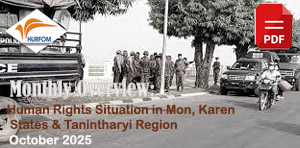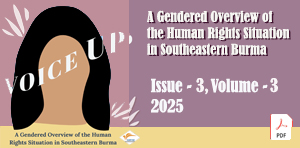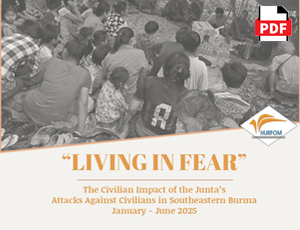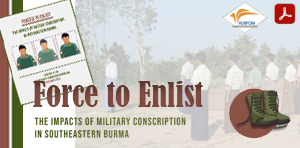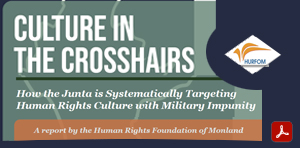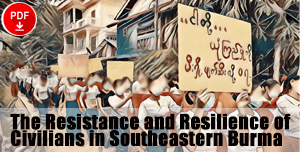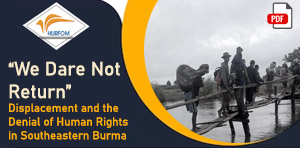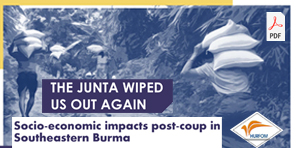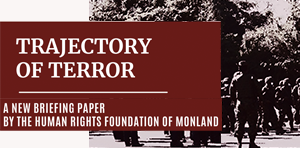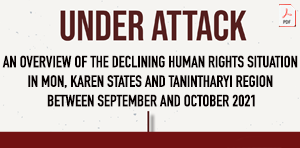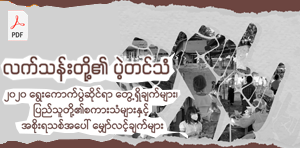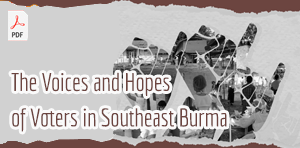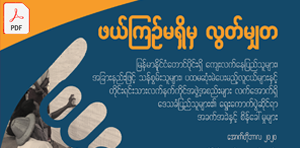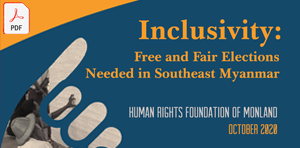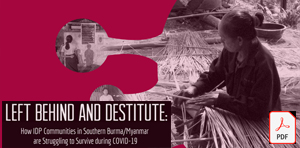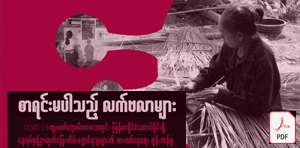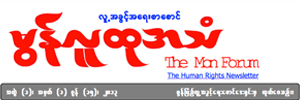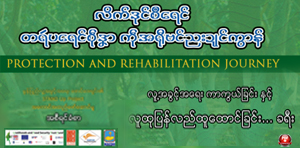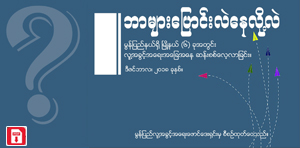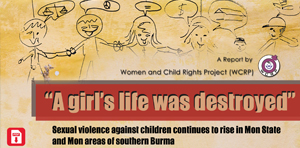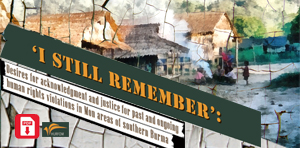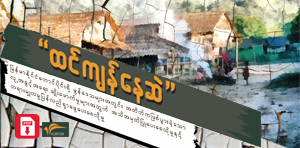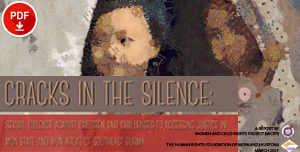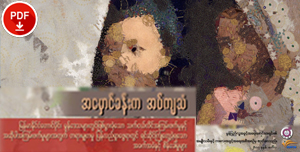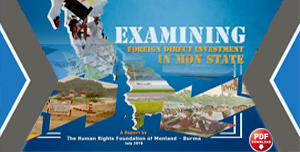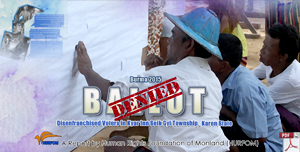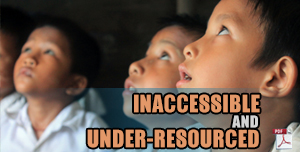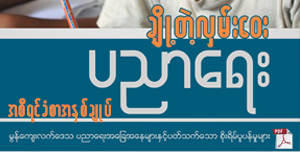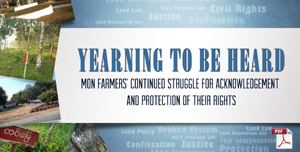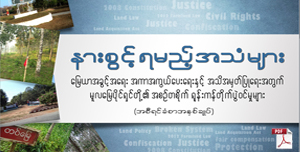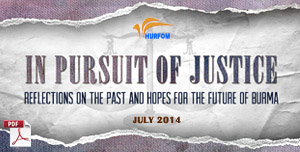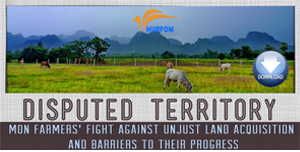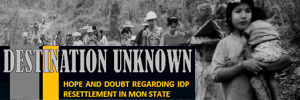Drugs problem in Burma and Drug Trafficking in Mon Areas
September 1, 2008
I.Burma: Well-known for Drug Production
Burma (Myanmar) continues to be second largest producer of opium after Afghanistan in this globe. Yet the military junta claims that it will free the country of opium cultivation by 2014. The fact – a corrupt military is known to turn a blind eye for it lines pockets and it is a main concern for the international community that whether they can end the drug problem in Burma, while the ethnic communities in various ethnic States express concern that the drug problems have increased. Read more
THE PLIGHT OF MIGRANT WORKER: SUFFRING ACROSS THE BORDERS
August 30, 2008
By WCRP:
I. The Background of Migration of Workers from Burma
Southern part of Burma, bordering with Thailand, is a resource-rich area with a strong agricultural based livelihood of diverse ethnic nationalities – Mon, Karen, Tavoyan, Pa-oh, and Burman. It also has natural gas, fishery reserves and large good soil farmlands. However, most of the ethnic local inhabitants have suffered starkly poverty for decades in contrast with largesse, a result of decades of economic mismanagement and corruption within the Burmese military bureaucracy which has taken place since the 1962’s Gen. Ne Win military coup till the present regime, namely State Peace and Development Council (SPDC). Additionally and simultaneously, like the previous regimes, this military regime (junta) SPDC has mounted heavy offensives against the ethnic groups in the border regions that have had crippling effects on civilian populations. Read more
Forced Labour Use by Burmese Army in Mon State from Mid-2007 to May 2008
August 5, 2008
I. Background Information
Since the involvement of International Labour Organization (ILO) in Burma from1999-2007 to eradicate forced labour, the use of forced labour in big cities has been reduced. However, the SPDC authorities and especially local military commanders from various military battalions based in rural area, have not changed their behavior, they continue to use local ethnic Mon, Karen and Tavoyan villagers as forced labour.
Between 1999 and 2000, the ILO informed the Burmese military regime, to stop the use of forced labour. However, the use of forced labour has continued as normal practice in most parts of rural areas in Karen State, Mon State, and Tenasserim Division. HURFOM found that the massive use of civilians as forced labour for government infrastructure projects have continued in some SPDC controlled areas, especially by army commanders. In particular, the SPDC used hundreds of thousands of civilians in Mon State and Tenasserim Division for the construction of the 110 miles long Ye-Tavoy railway. Read more
Suppressed: Freedom of Speech in Burma
July 24, 2008
History of Restriction against Freedom of Speech
To look at the smiling faces of the people of Burma, one could be forgiven for believing the Junta’s claim that their people are content. But it isn’t true; more like the Junta’s propaganda machines, the smiling faces do not tell you the full story. From the time a person in Burma wakes up in the morning they face conflict and uncertainty. There are no permanent jobs in Burma, no real ownership of anything and very high poverty. Added to all this is the lack of some fundamental human rights; there is no freedom of speech or freedom of press in Burma. Read more
Trouble Brewing; Before, During and After Cyclone Nargis
June 16, 2008
The Lead-up
Cyclone Nargis ripped through Burma on May 2nd and 3rd , with the Irrawaddy Delta and Rangoon divisions the worst affected areas. This was the first large-scale natural disaster to hit the Burmese people and numerous people were killed; to date it is estimated 78,000 people died and 56,000 are still missing, while over 2.4 million people languish homeless and hungry. These survivors are in desperate need of aid, with poor living conditions leaving their health in jeopardy. Read more
THE PLIGHTS OF BURMA’S DISABLED POPULATION
June 1, 2008
WCRP:
I. A Background on Disability
As of March 2008 the world’s population was estimated to have reached over 6.65 billion1 with between 282 and 608 million of these people classified as disabled, according to World Bank estimates2. Alarmingly people with disabilities make up 15 – 20% of the poor in developing countries (The World Bank)3. There are an estimated 150 million children with disabilities in the world, most of whom live with the reality of exclusion as a result of their surroundings. According to USAID up to 300 million women and girls alone are living with a mental and / or physical disability4, a statistic further confirmed by the World Health Organization (WHO), which claims women with disabilities comprise 10% of all women worldwide. Read more
Referendum 2008; Burma’s Road to a False Democracy
May 20, 2008
SPDC announce 92.4% approval for the constitution
Introduction
Under 46-years of military rule the people of Burma have had to live with near-constant intimidation and oppression leading to adversity politically, economically and socially. These people live in fear of the government’s intelligence and cannot speak freely. Ethnic minorities are ignored or marginalized by forced relocations and guerilla fighting. People are imprisoned for daring to challenge or question a highly suspicious and edgy government. Read more
Burma’s Constitutions: Downgrading from Democracy to Dictatorship
April 29, 2008
THE MON FORUM
A. The 1947 and 1974 Constitutions and Demands for Democracy
Burma has had two national constitutions since independence, known as the 1947 and 1974 Constitutions. Now, a third is scheduled to be voted on in a national referendum, scheduled for May 10th.
The first constitution was drawn up in 1947 in order to obtain freedom from Britain. But before it was drafted, the British colonial government allowed nationwide elections to be held and representatives were chosen for a “Constitution Drafting Assembly.” The elected representatives were chosen by the people and included many non-Burman leaders, who gave favor both to democratic rights and the rights of Burma’s many ethnic minorities. The resulting document guaranteed the rights of non-Burman ethnic nationalities and provided for a multi-party democratic political system. Read more
Another Cut: the SPDC Campaign to Erase Mon Culture
February 29, 2008
I. Introduction:
Burma is home to over a hundred ethnic groups and subgroups. While the military government has, quite deliberately, refrained from conducting a thorough or accurate survey of the country’s ethnic make up, it identifies eight “major national ethnic races,” of which there are over one hundred recognized subgroups. Of these groups and subgroups, official census date estimates that nearly seventy percent of the population is ethnic Burman, though this number is thought to be exaggerated in an attempt to bolster the legitimacy of the Burman dominated State Peace and Development Council (SPDC) regime.
Burman dominance was not, however, always the rule; for over a thousand years Mon kings ruled territory that encompassed much of the Southeast Asian mainland. Most of the population in Northern and Central Thailand was Mon until only six or seven hundred years ago, and the Mon remained heavily in the majority throughout central and southern Burma until the 1700s, when they finally lost their kingdom to the Burman king Alaungphaya in 1757. Read more
A two crops policy that barely yields one: the failed Win-pha-non Dam project
January 31, 2008
Introduction
Heavy-handed, but poorly designed and managed, government policy has kept Burma’s economy in steady decline for decades. This report details one such failed policy, an irrigation project designed to enable farmers to grow crops in the dry season. Unfortunately, the project has not only failed to achieve its goal but has actually reduced the amount of arable land in the area. The failure of the project has, in turn, highlighted the existence, and consequences, of corruption within the military regime. Instead of reporting the failure of the project, local officials file reports of a successful project, making reform and future success impossible.
Background
Fifty years ago, Burma was one of the richest countries in South East Asia. After independence in 1948, and a coup in 1962, Burma quickly lost that status. Following the coup Ne Win, the country’s new leader, ordered farmers to plant rice crops during two seasons instead of one. The policy was an attempt to regain the country’s position as the world’s largest rice exporter, and in 1973 it was implemented and backed with heavy penalties. Read more



